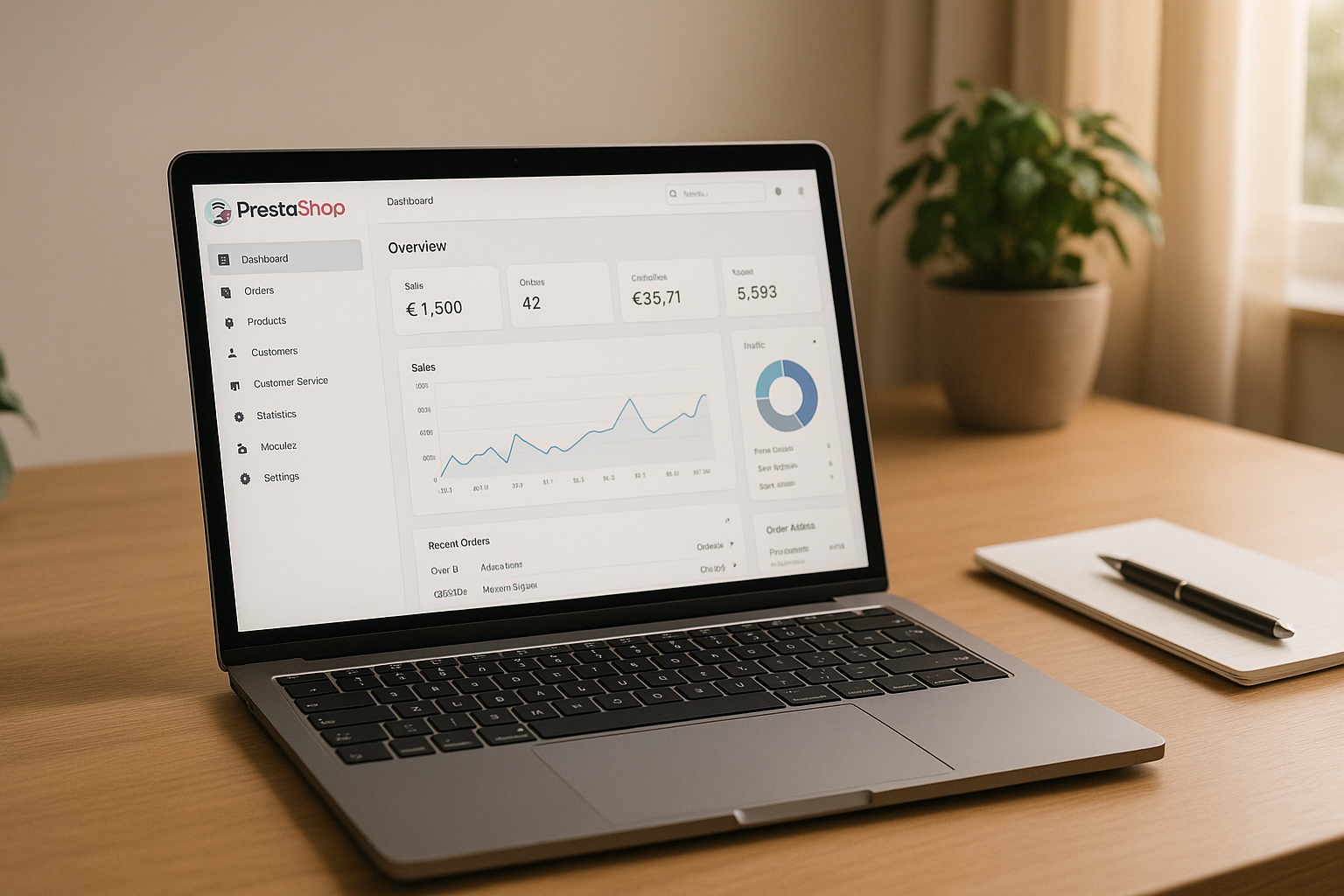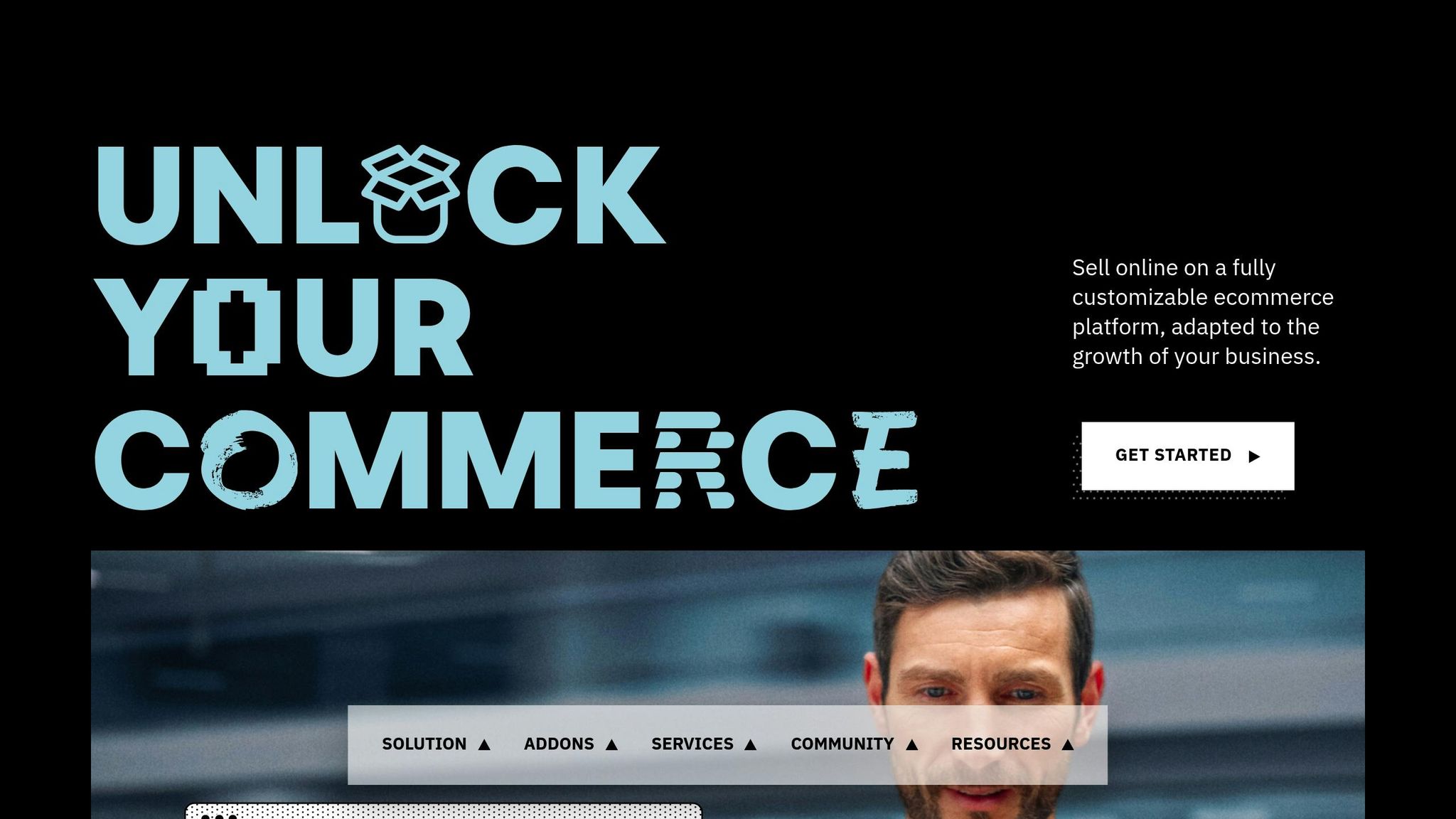
Ultimate Guide: Optimizing a Prestashop E-Commerce Website
Ultimate Guide: Optimize an E-Commerce Website Prestashop
A , fast, and well-structured website is essential to succeed in Switzerland. Why? Because Swiss consumers, demanding, leave a site if the loading time exceeds 3 seconds. Optimizing your PrestaShop store improves speed, SEO, and local compliance.
Key points to succeed:
- Speed: Reduce loading times with tools like Memcached, Redis, or WebP image formats.
- SEO: Adapt your , meta descriptions, and use structured data to better target the Swiss market.
- Localization: Display prices in CHF (e.g., 1'234.50 CHF), offer local payment methods (Twint, PostFinance), and comply with legal standards (LPD, GDPR).
- User Experience: Simplify the ordering process, and use tools like lazy loading.
- Maintenance: , update your modules, and monitor performance with GTmetrix or Google PageSpeed Insights.
Investing in these optimizations reduces cart abandonment, and meets local expectations. like can help you achieve these goals.
Improve the performance of your PrestaShop store and optimize page speed

Performance optimization techniques
The performance of a PrestaShop site relies on three technical pillars: server infrastructure, software configuration, and file optimization. These concrete approaches complement the basics introduced earlier, combining actions that reduce loading times and improve user experience. Results can often be observed quickly after implementation.
Server and hosting improvements
Switching from shared hosting to a VPS can offer an immediate performance boost. Additionally, using PHP 7.4 or a newer version doubles performance compared to PHP 5.6, with requests processed twice as fast[3]. A configuration combining a reverse proxy Nginx in front of Apache optimizes the management of static and dynamic content, with each server focusing on its strengths.
Server-side caching solutions like Memcached or Redis store frequently accessed data in memory. This reduces loading times, especially during traffic spikes, while decreasing the load on the server. These options can be activated via Advanced Settings > Performance[3].
Here is an overview of available hosting options:
| Hosting Type | Performance | Scalability | Cost (CHF/month) | Recommended for |
|---|---|---|---|---|
| Shared Hosting | Low | Low | 5–20 | Small stores |
| VPS | Medium | Medium | 20–100 | Growing stores |
| Dedicated Server | High | High | 100–500+ | Large volumes |
PrestaShop configuration settings
The CCC (Combine, Compress, Cache) feature allows you to combine CSS and JavaScript files into a single file, compress them, and cache them. This reduces the number of HTTP requests and the total data transferred[3]. You can enable this option via Advanced Settings > Performance, but it is advisable to test its compatibility with your theme and modules.
The production mode of Smarty (option "Never recompile template files") precompiles template files for quick serving, eliminating recompilation on each visit. This setting immediately improves the loading times of product and category pages[3].
Regularly auditing installed modules is also recommended. Disabling unused features, such as certain widgets or unused analytics tools, can streamline the code and improve overall stability[3].
Image and file compression
Image optimization plays a key role in improving user experience. Converting images to the WebP format can reduce their size by 20 to 30% compared to JPEG or PNG formats, without a noticeable loss of quality[3]. Tools like ImageOptim or TinyPNG can automate this process.
Lazy loading is another effective technique: it delays the loading of images until they are visible on the screen, reducing the initial loading time and saving bandwidth.
For HTML, CSS, and JavaScript files, enabling gzip or Brotli compression on your server (Apache or Nginx) can reduce their weight by up to 70%[3].
| Image Format | Size Reduction | Browser Support | Impact on Quality |
|---|---|---|---|
| JPEG/PNG | Reference size | Universal | None |
| WebP | 20–30% reduction | Modern browsers | None or minimal |
Regularly cleaning the database is also essential. Remove abandoned carts and old logs to ensure consistent response times, even with data accumulation. Finally, cache preloading allows you to generate the cache of the most popular pages in advance, ensuring optimal loading for all visitors, even during peak traffic[3]. These combined actions ensure stable and fast performance.
SEO Best Practices for PrestaShop
Optimizing your PrestaShop site involves precise work on your product pages, appropriate multilingual configuration, and targeted technical adjustments. These combined efforts improve visibility and positioning of your online store.
Product page optimization
Each product page must be carefully crafted to capture users' attention and meet search engine requirements. This includes a , engaging meta description, and a detailed and optimized description. For the Swiss market, it is essential to integrate region-specific terms for each linguistic region and customize the content accordingly.
Image alt tags should be descriptive and include relevant keywords, while respecting the language of the targeted market. For example, for a product intended for French-speaking Switzerland, prioritize French descriptions tailored to local expectations.
Using (like schema.org) is also a powerful lever. This data allows for rich snippets (name, price in CHF, availability, reviews) to be displayed in search results, increasing the click-through rate (CTR).
| SEO Element | Recommended Action | Expected Impact |
|---|---|---|
| Product Title | Include main keywords and brand | Better ranking |
| Meta Description | Write 150–160 characters with a call to action | Increased CTR |
| Structured Data | Indicate price in CHF, reviews, availability | Display rich snippets |
Multilingual SEO configuration
For a PrestaShop store targeting both the Swiss market and international audiences, correctly implementing hreflang tags is crucial. These tags should indicate both the language and region, such as hreflang="fr-CH" for Swiss French. Each language version should also include a self-referencing hreflang tag and an x-default tag for international visitors [2].
Localization goes beyond translation. URLs, meta tags, and content must be tailored to local specificities. While PrestaShop offers built-in multilingual tools, manual verification is essential to ensure quality.
A common issue is managing duplicate content across different language versions. To avoid this, use appropriate and ensure each version provides added value for its audience [2].
Technical SEO improvements
Technical aspects play a key role in SEO. Here are some concrete actions to optimize your PrestaShop:
- Enable minification of CSS and JavaScript files via CCC options to reduce HTTP requests and speed up page loading.
- Defer non-essential JavaScript loading and enable GZIP or Brotli compression to lighten files and improve display [3].
- Use Google Search Console to identify and fix crawling errors and monitor your Core Web Vitals [2].
A concrete example: a Swiss retailer applied these practices by optimizing product descriptions in multiple languages, using WebP images, and enabling caching. The result? A 30% improvement in their PageSpeed score and a 25% increase in organic traffic from Switzerland and internationally over six months [5].
For a perfectly tailored SEO and localization strategy for the Swiss market, collaborating with a specialized agency like EWM SA can be beneficial. Their in-depth expertise in the local market and human-centered approach ensure effective optimization while meeting international standards [5].
User Experience Improvements
A well-thought-out user experience can turn a simple visit into a conversion, while increasing customer satisfaction. Building on the technical and SEO optimizations mentioned earlier, it is possible to create a smooth and engaging customer journey.
Order process optimization
The order process is a crucial step where the purchase decision is made. To prevent abandonment, limit the information requested to essential elements: name, address, email, and payment method. Each additional field risks discouraging your customers.
Offer a guest checkout and integrate local payment options like PostFinance, Twint, or credit cards. This reduces abandonment and builds trust. Providing the choice between guest checkout and account creation is a good practice.
For the Swiss market, display prices in CHF 1'234.50 (with an apostrophe as a thousand separator) in line with local conventions and enhance your store's credibility.
Take the example of a Swiss retailer using PrestaShop: by implementing a simplified one-page checkout with Twint and PostFinance integration, they saw a 20% decrease in cart abandonment and a 15% increase in mobile conversions in just three months. These results were measured using Google Analytics and PrestaShop reporting tools.
Lastly, ensure that the design of the checkout process is perfectly tailored to touch screens, ensuring a smooth experience on all devices.
Mobile-Friendly Design
With the constant rise of , it is imperative that , from smartphones to tablets. To avoid navigation errors, ensure that touch areas are at least 44 pixels in size.
Loading speed is also essential. For example, compressing images from 2 MB in PNG to 150 KB in WebP significantly improves loading times without sacrificing visual quality. Adding lazy loading allows images to load only when they become visible, reducing the initial loading time, especially on slower mobile connections.
Here are some key optimizations for mobile:
| Mobile Element | Recommended Optimization | Expected Benefit |
|---|---|---|
| Images | WebP format + lazy loading | 70% reduction in loading times |
| Touch Areas | Minimum 44 pixels | Fewer navigation errors |
| Forms | Mobile-friendly fields | Improved completion rate |
In addition, modules like